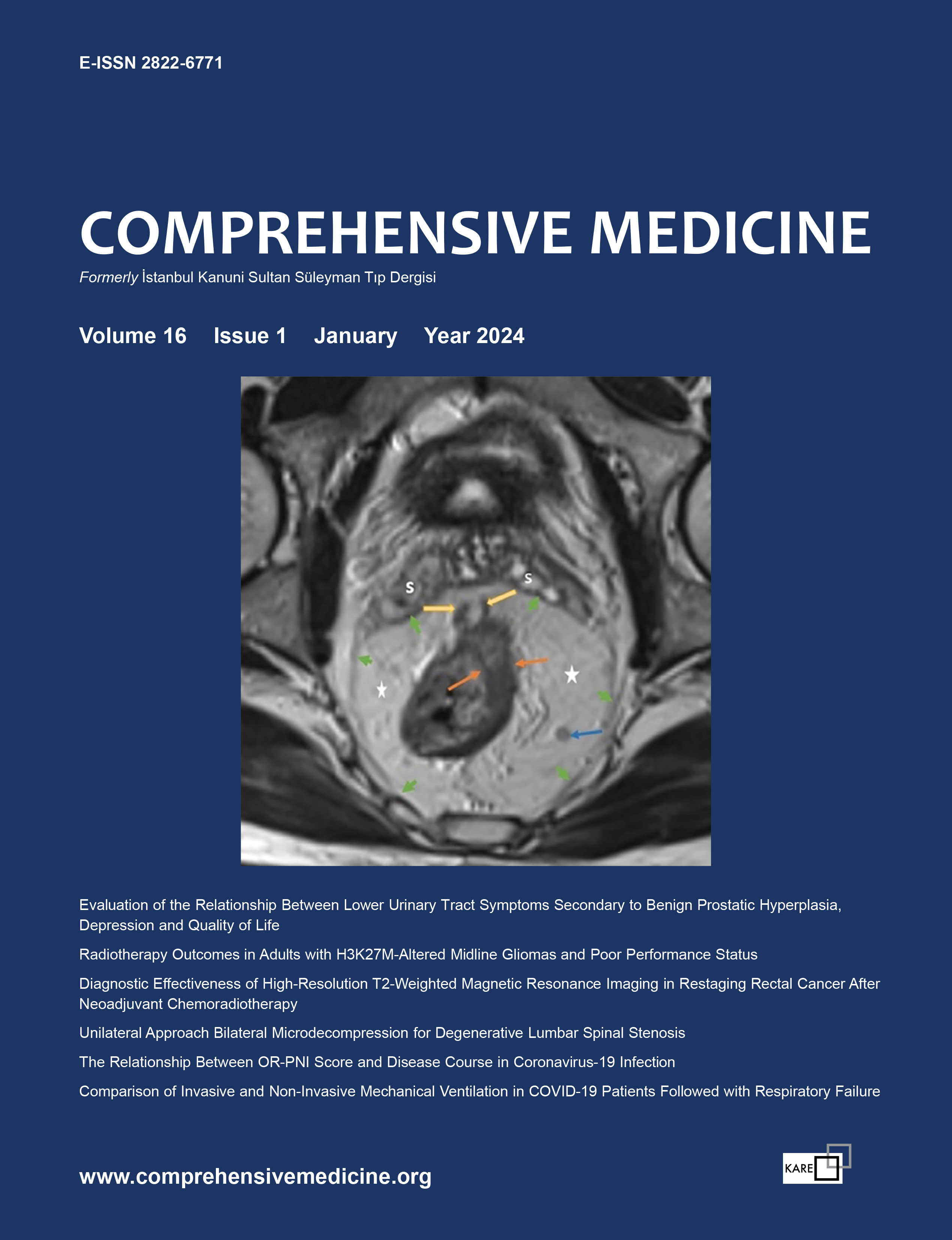






Our Surgical Treatment Results in Adult Tethered Cord Syndrome: An Experience of 9 Cases
Emre Delen, Ahmet Tolgay Akıncı, Osman ŞimşekDepartment Of Neurosurgery, Trakya University, Edirne, TurkeyINTRODUCTION: The aim of this study was to present the results of surgical treatment along with demographic and clinical features in tethered spinal cord syndrome cases seen in adulthood.
METHODS: We retrospectively evaluated 73 cases who underwent tethered cord release operations between 2004 and 2015 in our clinic. The mean follow-up period was 21.7 (3 - 63) months. Adult cases were 5 female and 4 male patients with ages between 18 - 55. Clinical and radiological characteristics of the patients and follow-up data on the surgical treatment were obtained. Pain and neurological findings were graded using the scoring system proposed by Klekamp et al.
RESULTS: Nine patients had complaints of back and/or leg pain, two patients had gait ataxia and three patients had bladder dysfunction. Only one patient had a loss of muscle strength. There were cutaneous stigmata in a total of three patients: Two dermal sinus tracts, one thoracic dermatomal hypertrichosis. Four patients had scoliosis, 4 had syringomyelia and 3 had split cord malformation. The level of conus medullaris was L3 in one patient, L4 in 3 patients, L5 in 2 patients, and S1 in one patient. All patients underwent surgical de-tethering. Most of the patients reported a decrease in their pain levels. However, sensory dysfunction and sphincter problems remained unresolved.
DISCUSSION AND CONCLUSION: The main difference between adult cases compared to paediatric cases was symptomatology. The pain was the cardinal symptom in almost all cases. While the surgery was effective to diminish pain, resolution of neurological deficits was disappointing in this series.
Erişkin Gergin Kord Sendromlu 9 Olguda Cerrahi Tedavi Sonuçlarımız
Emre Delen, Ahmet Tolgay Akıncı, Osman ŞimşekTrakya Üniversitesi Tıp Fakültesi, Beyin Ve Sinir Cerrahisi Ana Bilim Dalı, EdirneGİRİŞ ve AMAÇ: Bu çalışmanın amacı erişkinlikte görülen omurilik sendromu olgularında cerrahi tedavi sonuçlarını demografik ve klinik özelliklerle birlikte sunmaktır.
YÖNTEM ve GEREÇLER: Kliniğimizde 2004-2015 yılları arasında gergin kord sendromu tanısıyla operasyon geçiren 73 olguyu retrospektif olarak değerlendirdik. Ortalama takip süresi 21.7 (3-63) aydı. Erişkin olgular 18-55 yaş arası 5 kadın, 4 erkek hasta idi. Hastaların klinik ve radyolojik özellikleri ve cerrahi tedavi ile ilgili takip verileri alındı. Ağrı ve nörolojik bulgular Klekamp ve arkadaşlarının önerdiği skorlama sistemi kullanılarak derecelendirildi.
BULGULAR: Dokuz hastada sırt ve/veya bacak ağrısı şikayeti, iki hastada yürüyüş ataksisi ve üç hastada mesane disfonksiyonu vardı. Sadece bir hastada kas kuvveti kaybı vardı. Toplam üç hastada cilt bulguları vardı: bunlar iki dermal sinüs traktı ve bir olguda torasik dermatomal kıllanma artışı idi. Dört hastada skolyoz, 4 hastada sringomyelya ve 3 hastada split kord malformasyonu tespit edildi. Conus medullaris seviyesi bir hastada L3, 3 hastada L4, 2 hastada L5 ve bir hastada S1 idi. Tüm hastalara kord serbesleştirilmesi operasyonu uygulandı. Hastaların çoğu ağrı seviyelerinde bir azalma olduğunu bildirdi. Ancak duyusal işlev bozukluğu ve sfinkter disfonksiyonununda iyileşme tespit edilmedi.
TARTIŞMA ve SONUÇ: Yetişkin olgular ile pediatrik olgular karşılaştırıldığında temel fark semptomatoloji idi. Ağrı hemen hemen tüm vakalarda kardinal semptomdu. Ameliyat ağrıyı azaltmada etkiliyken, nörolojik defisitlerin düzelmesinde etkin değildi.
Corresponding Author: Emre Delen, Türkiye
Manuscript Language: English








